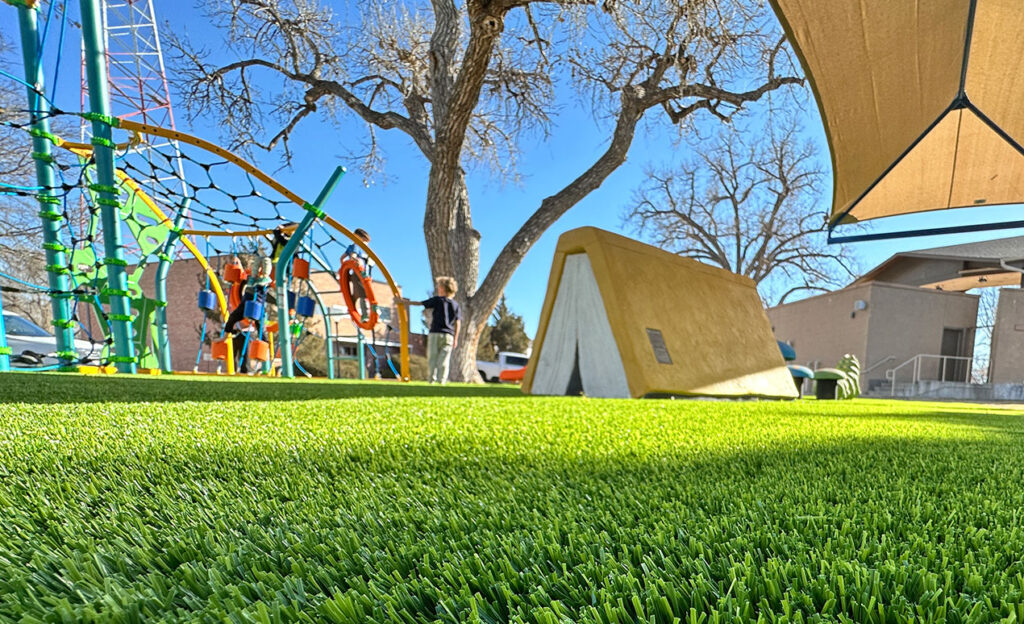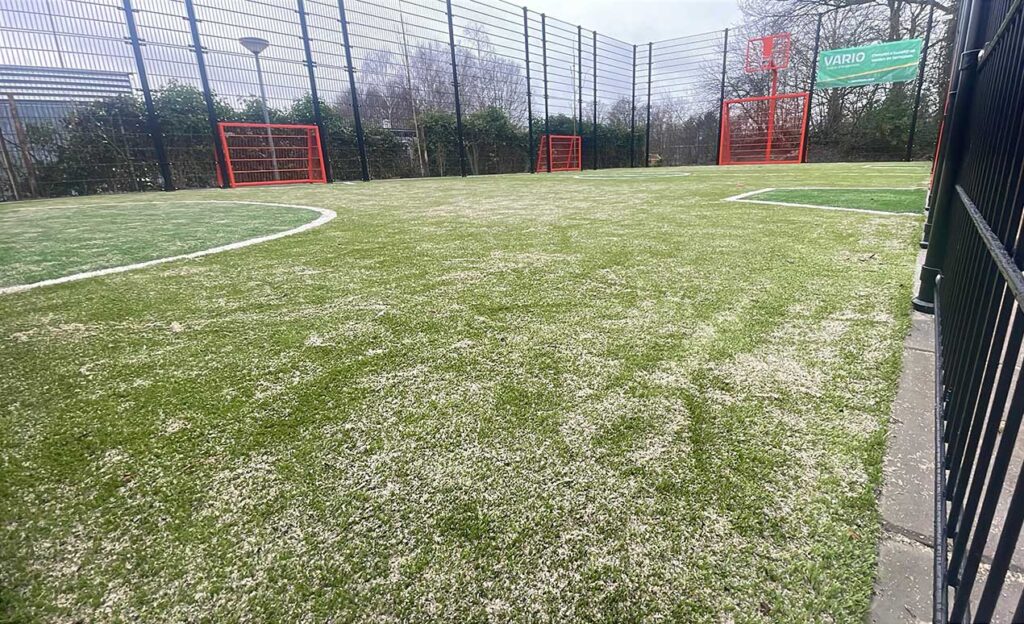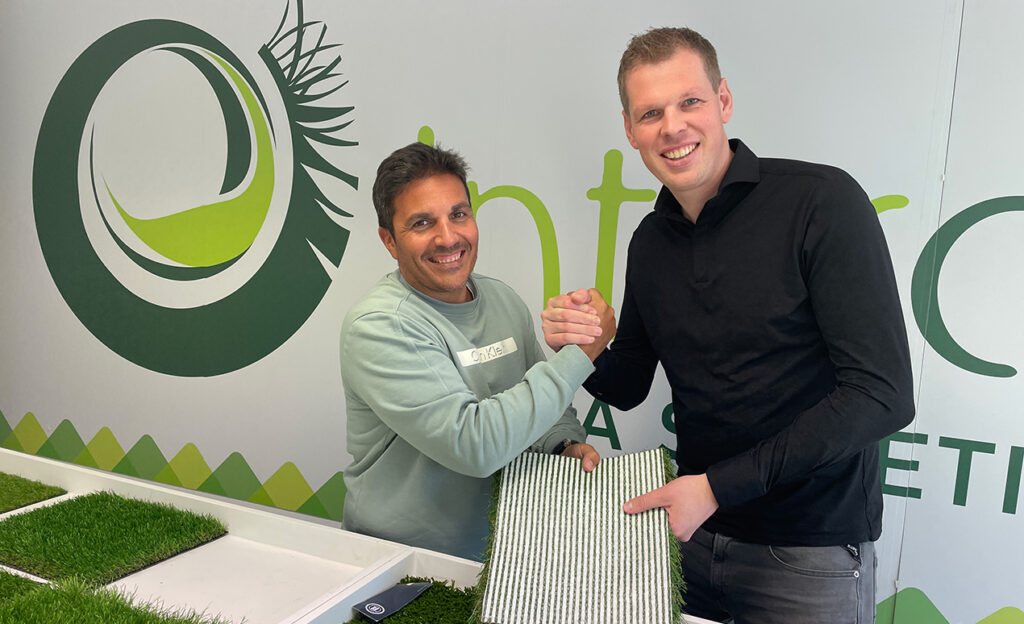Sustainability is becoming an increasingly important theme in our society, with many companies promoting their products as environmentally friendly. Artificial grass is no exception. But what does it really mean to call artificial grass truly sustainable? The concept of sustainability can sometimes be vague and is often confused with the lifespan of a product. In this article, we explore what truly makes artificial grass sustainable.
Material Choice
One of the key factors in determining the sustainability of artificial grass is the choice of material. Artificial grass can be made from various types of polymers, such as polyethylene (PE), polypropylene (PP), and polyamide (PA). Using a single material, like 100% polyethylene, can significantly simplify the recycling process at the end of the grass’s lifecycle. This allows the artificial grass to be converted into new products at the end of its life, reducing waste and decreasing the need for new raw materials.
Production Process
The production process of artificial grass also plays a crucial role in its sustainability. Energy-efficient production methods and the use of renewable energy sources can significantly reduce CO2 emissions during manufacturing. Additionally, reducing waste during production and reusing leftover materials can contribute to a more sustainable end product.
Use of Additives
Many artificial grass products contain chemical additives, such as plasticizers and stabilizers, which can be harmful to the environment. Avoiding these additives or using eco-friendly alternatives can significantly reduce the environmental impact of artificial grass. Moreover, artificial grass produced without these harmful substances can be safer for humans and animals.
Recyclability
Truly sustainable artificial grass should be recyclable at the end of its life, allowing the material to be recovered and reused in new products without complex processes. Designing with recycling in mind, such as using a monomaterial composition, ensures a circular lifecycle and supports a circular economy.
To maximize sustainability, it’s important to avoid downcycling, where materials are recycled into lower-quality products. By prioritizing high-quality recycling, we can maintain the material’s value for use in new, high-quality products.
Environmental Impact During Use
Beyond production and end-of-life considerations, it is also important to examine the environmental impact of artificial grass during use. Artificial grass does not require water, fertilizers, or pesticides, which contributes to water conservation and reduces chemical pollution. Additionally, artificial grass stays green year-round and requires less maintenance than natural grass, resulting in less use of lawn equipment and therefore lower greenhouse gas emissions.
Lifespan and Quality
While lifespan is not the only factor determining sustainability, it does play an important role. High-quality artificial grass that lasts a long time needs to be replaced less frequently, resulting in less material usage and waste in the long run. A sustainable choice means investing in a high-quality product that withstands wear and tear and the elements.
Understanding Environmental Impact
To make the environmental impact of artificial grass products transparent, an Environmental Product Declaration (EPD) can be utilized. An EPD is a standardized document that displays the environmental performance of a product throughout its entire lifecycle, from raw material extraction to production, use, and end-of-life. Through an EPD, consumers and businesses can make informed choices based on reliable and comparable environmental data. For example, LimeGreen offers detailed EPDs for their products, such as the ONE-DNA™ artificial grass lines, clearly mapping the ecological footprint of these products.
Conclusion
Sustainable artificial grass goes beyond just having a long lifespan. It encompasses the choice of environmentally friendly materials, an efficient production process, avoiding harmful additives, recyclability, and low environmental impact during use. By considering these factors, consumers and businesses can contribute to a more sustainable future. When choosing artificial grass, it’s important to look beyond marketing claims and investigate how a product truly performs in terms of sustainability. Only then can an informed decision be made that contributes to a healthier planet.

































